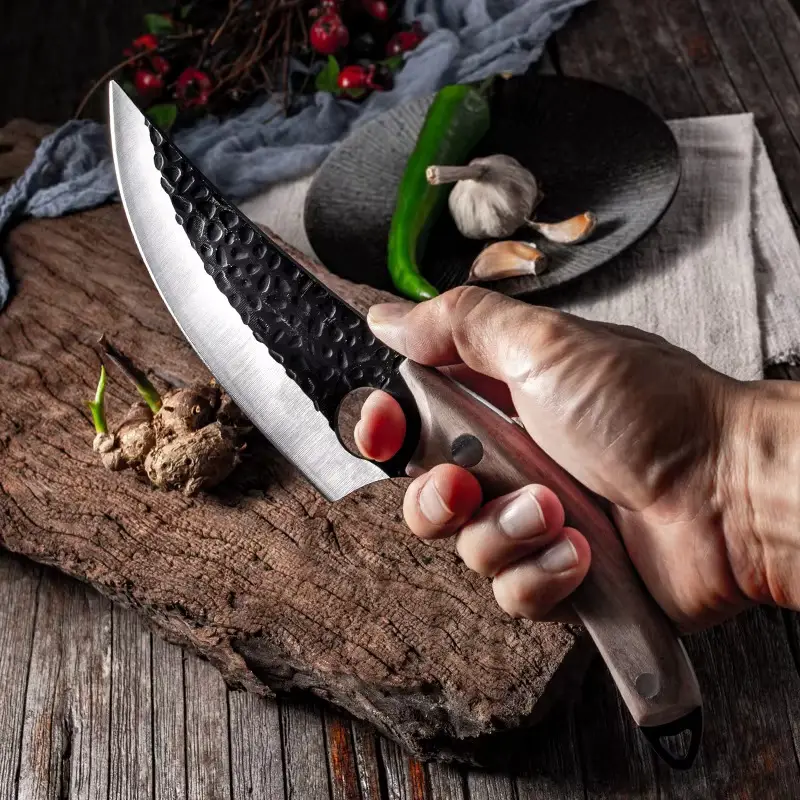Hard-boiled eggs are a versatile and nutritious staple that can be enjoyed in countless ways. Whether you’re a beginner in the kitchen or an experienced cook, mastering the art of hard-boiling eggs is essential. In this comprehensive guide, we’ll walk you through everything you need to know about making the perfect hard-boiled eggs, from ingredients and instructions to serving suggestions and common questions. Let’s crack into it!
Ingredients
To get started, you’ll need just a couple of simple ingredients:
- 6 large eggs
- Water
Instructions
Follow these straightforward steps to achieve perfectly cooked hard-boiled eggs every time:
- Place Eggs in a Pot: Arrange your eggs in a single layer at the bottom of a pot. This ensures even cooking.
- Cover with Water: Fill the pot with enough water to cover the eggs by about an inch.
- Bring to a Boil: Set your stove to medium heat and bring the water to a rolling boil.
- Remove from Heat: Once the water is boiling, cover the pot with a lid and remove it from the heat source.
- Let Sit: Allow the eggs to sit in the hot water for 9-12 minutes, depending on your desired level of doneness.
- Transfer to Ice Bath: Once the time is up, transfer the eggs to a bowl of ice water for about 5 minutes. This stops the cooking process and makes peeling easier.
- Peel and Enjoy: Gently tap the eggs on a hard surface to crack the shell, then peel away and enjoy your perfectly cooked hard-boiled eggs!
Cooking Time Guide
- 9 Minutes: Creamy and slightly soft yolk
- 10 Minutes: Firm and fully cooked yolk
- 12 Minutes: Slightly drier yolk, perfect for egg salads
Nutrition Facts
Hard-boiled eggs are not only delicious but also pack a nutritional punch. Here’s what you get from each egg:
- Calories: 68
- Protein: 6g
- Fat: 5g
- Carbohydrates: 0g
- Fiber: 0g
Eggs are an excellent source of high-quality protein and healthy fats, making them an ideal food for maintaining energy levels and muscle health.
How to Serve Hard-Boiled Eggs
Hard-boiled eggs are not only a nutritious option but also an incredibly versatile ingredient that can elevate various meals and snacks. Their rich protein content, combined with a creamy texture and subtle flavor, allows them to be incorporated in many culinary creations. Here are several detailed suggestions to inspire your culinary adventures with hard-boiled eggs:
As a Snack
Hard-boiled eggs make for an excellent on-the-go snack. For a simple yet satisfying treat, peel the eggs and sprinkle them with salt and pepper. You can also experiment with different seasonings such as paprika, garlic powder, or hot sauce to suit your taste preferences. For an extra boost of flavor, consider dipping them in hummus or a light vinaigrette. Pairing them with a side of fresh vegetables can add crunch and additional nutrients.
In Salads
Adding hard-boiled eggs to salads is a fantastic way to enhance both the protein content and the overall flavor profile. Chop the eggs and toss them into green salads, grain bowls, or pasta salads. They pair particularly well with ingredients like spinach, arugula, cherry tomatoes, and cucumbers. For a classic combination, try a Cobb salad that features diced hard-boiled eggs alongside crispy bacon, avocado, blue cheese, and a rich dressing. Alternatively, you can create a protein-packed grain salad with quinoa, roasted vegetables, and a lemon-tahini dressing, topped with chopped hard-boiled eggs.
Egg Salad
Egg salad is a beloved classic that offers endless variations to cater to different tastes. To prepare, mash the hard-boiled eggs in a bowl and combine them with mayonnaise, mustard, diced celery, and green onions for a refreshing crunch. Feel free to customize the recipe by adding herbs such as dill or chives, or incorporating ingredients like relish, capers, or even avocado for creaminess. Serve your egg salad on whole-grain bread, in a lettuce wrap, or as a dip with crackers or vegetable sticks for a delightful lunch or picnic option.
Deviled Eggs
Deviled eggs are a timeless appetizer that can be dressed up for any occasion. To make them, start by halving the hard-boiled eggs lengthwise and gently scooping out the yolks. In a mixing bowl, combine the yolks with mayonnaise, mustard, vinegar, and your choice of spices. Classic flavors include paprika, cayenne, or even a touch of curry powder for a unique twist. After mixing until smooth, spoon or pipe the mixture back into the egg whites. Garnish with fresh herbs, bacon bits, or a sprinkle of smoked paprika for an attractive presentation. Deviled eggs are perfect for parties, picnics, or holiday gatherings.
On Toast
Hard-boiled eggs can transform your breakfast or brunch experience when served on toast. Slice the eggs and layer them on top of whole-grain or sourdough bread, which can be enhanced with spreads like avocado or hummus. A sprinkle of salt, pepper, and red pepper flakes can add a kick, while fresh herbs like cilantro or parsley can provide a refreshing touch. For a complete meal, consider adding sliced tomatoes, radishes, or even smoked salmon for a flavor-packed breakfast. This combination not only looks appealing but also provides a well-rounded meal rich in nutrients.
Additional Serving Ideas
- Breakfast Bowls: Combine chopped hard-boiled eggs with sautéed vegetables, grains, and your favorite sauce for a hearty breakfast bowl.
- Sandwiches: Use hard-boiled eggs as a filling for sandwiches, along with leafy greens, tomatoes, and spreads like pesto or aioli.
- Sushi Rolls: Incorporate sliced hard-boiled eggs into sushi rolls for a unique take on traditional sushi, providing a creamy texture.
- Curry: Add chopped hard-boiled eggs to Indian-style curry dishes for an unexpected twist that enhances the dish’s richness.
By exploring these various serving methods, you can make hard-boiled eggs a staple in your kitchen. Their versatility allows for creative combinations that can fit into any meal of the day, making them a fantastic option for busy lifestyles or elaborate culinary endeavors.
Additional Tips for Perfect Hard-Boiled Eggs
Achieving the perfect hard-boiled egg can sometimes feel like an art form, but with the right techniques and a few insider tips, you can master this culinary staple. Here are some additional tips that will ensure your hard-boiled eggs turn out perfectly every time, enhancing both their flavor and ease of preparation.
1. Choose the Right Eggs: The Age Matters
One of the most crucial aspects of hard-boiling eggs is selecting the right eggs. Contrary to what many believe, fresher eggs can be more challenging to peel. When eggs are laid, they have a protective coating that helps keep bacteria out and moisture in. Over time, this coating breaks down, and air seeps into the egg, causing it to become easier to peel. For optimal results, choose eggs that are at least a week to two weeks old. You can ask your local grocery store for the packing date or check for the “sell by” date to ensure you’re selecting the right eggs.
2. Perfecting Your Peeling Technique
Peeling hard-boiled eggs can sometimes be a frustrating experience, especially when the shell clings stubbornly to the egg white. To make the peeling process smoother, try this simple yet effective technique:
- After boiling your eggs, remove them from the hot water and place them in an ice bath or run them under cold water for several minutes. This not only halts the cooking process but also causes the egg to contract slightly from the shell, making it easier to peel.
- Once cooled, gently roll the egg on the countertop to create small cracks in the shell. This helps loosen the membrane from the egg white. Start peeling from the wider end, where there is usually an air pocket, which can give you a starting point for easier removal of the shell.
3. Storing Hard-Boiled Eggs Properly
Proper storage of hard-boiled eggs is essential for maintaining their freshness and safety. If you’ve boiled a batch of eggs and are not consuming them immediately, here are some storage guidelines:
- Keep unpeeled hard-boiled eggs in the refrigerator. They can be stored for up to one week, ensuring that they remain edible and flavorful. The shells help protect the eggs from absorbing odors from other foods in the fridge.
- If you’ve already peeled your eggs, place them in a container with a damp paper towel to keep them moist. Alternatively, you can submerge them in water in a sealed container. This method helps prevent them from drying out and keeps them fresh for a shorter period—ideally, consume them within two to three days.
4. Freshness Test: A Simple Floating Experiment
If you have a batch of eggs and are unsure of their freshness, there is a straightforward method to test them before cooking. This freshness test involves water:
- Fill a bowl or a glass with water and gently place the egg inside. Observe how it behaves. Fresh eggs will sink to the bottom and lay flat on their sides. If the egg stands upright on the bottom, it is still safe to eat but should be consumed soon. If the egg floats to the surface, it has gone bad and should be discarded.
- This floating phenomenon occurs because as eggs age, air pockets develop inside them, causing them to become less dense than water. This test is a great way to minimize waste in the kitchen and ensure that you are using only the freshest ingredients.
5. Experimenting with Cooking Times
While the standard method for hard-boiling eggs typically involves cooking them for about 9-12 minutes, you may want to experiment with cooking times to achieve your desired yolk consistency. For slightly softer yolks, try cooking the eggs for 7-9 minutes, and for firmer yolks, extend the cooking time to 12-15 minutes. Always remember to plunge the eggs into an ice bath immediately after cooking to stop the cooking process and prevent overcooking.
By implementing these additional tips, you can elevate your hard-boiled egg game, ensuring that each egg is not only easy to peel but also perfectly cooked and delicious. Whether you enjoy them as a snack, in salads, or as part of a larger dish, these techniques will help you achieve egg-cellent results every time!
FAQs
1. How can I avoid green rings around the yolk?
Green rings are caused by overcooking. Ensure you don’t cook the eggs for longer than 12 minutes and cool them promptly in an ice bath.
2. Can I make hard-boiled eggs in an Instant Pot?
Yes, you can! Place the eggs on a trivet, add water, and cook on high pressure for 5 minutes, followed by a quick release and an ice bath.
3. Why do my eggs crack during boiling?
Cracking can occur if the eggs are added directly to boiling water. Start with cold water to prevent this issue.
4. How do I know if an egg is bad before boiling?
Perform the float test mentioned above or crack the egg open to check for any unusual odor or appearance.
5. Can I freeze hard-boiled eggs?
Freezing is not recommended as it can affect the texture. Instead, refrigerate them and consume within a week.
Conclusion
Hard-boiled eggs are a culinary classic that offers simplicity, nutrition, and versatility. With just two ingredients—eggs and water—and a few simple steps, you can prepare a batch of perfectly cooked eggs that are ready to enhance any meal. The beauty of hard-boiled eggs lies in their ability to complement a wide variety of dishes, from quick snacks to elaborate meals. Their rich, creamy yolk and firm white make them a satisfying protein-packed option for any time of day.
Whether you’re enjoying them as a snack, in a salad, or as part of a more elaborate dish like egg curry or deviled eggs, hard-boiled eggs are sure to satisfy. They are a great addition to salads, offering both texture and nutrition, and can even serve as the star ingredient in dishes like egg salad or potato salad. You can also use them as a topping for toast, ramen, or grain bowls for an extra boost of protein.
Follow our guide, experiment with serving suggestions, and enjoy the countless ways to incorporate hard-boiled eggs into your diet. From simple and quick to more creative presentations, hard-boiled eggs can easily fit into any meal plan. Happy cooking! 🥚
Print
Perfect Hard-Boiled Eggs Recipe
Ingredients
- 6 large eggs
- Water
Instructions
- Place Eggs in a Pot: Arrange your eggs in a single layer at the bottom of a pot. This ensures even cooking.
- Cover with Water: Fill the pot with enough water to cover the eggs by about an inch.
- Bring to a Boil: Set your stove to medium heat and bring the water to a rolling boil.
- Remove from Heat: Once the water is boiling, cover the pot with a lid and remove it from the heat source.
- Let Sit: Allow the eggs to sit in the hot water for 9-12 minutes, depending on your desired level of doneness.
- Transfer to Ice Bath: Once the time is up, transfer the eggs to a bowl of ice water for about 5 minutes. This stops the cooking process and makes peeling easier.
- Peel and Enjoy: Gently tap the eggs on a hard surface to crack the shell, then peel away and enjoy your perfectly cooked hard-boiled eggs!
Cooking Time Guide
- 9 Minutes: Creamy and slightly soft yolk
- 10 Minutes: Firm and fully cooked yolk
- 12 Minutes: Slightly drier yolk, perfect for egg salads
Nutrition
- Serving Size: one normal portion
- Calories: 68
- Fat: 5g
- Carbohydrates: 0g
- Fiber: 0g
- Protein: 6g



